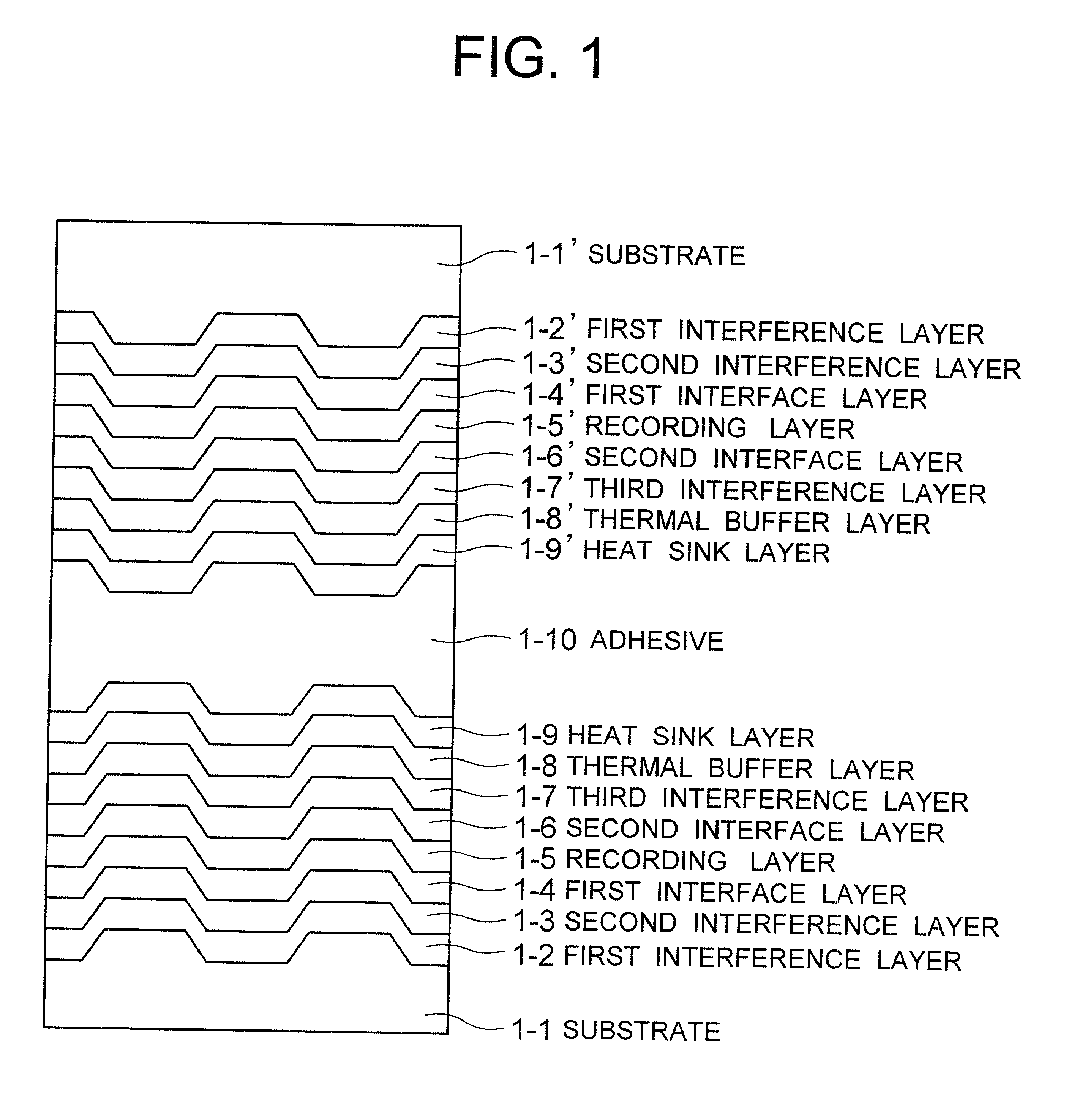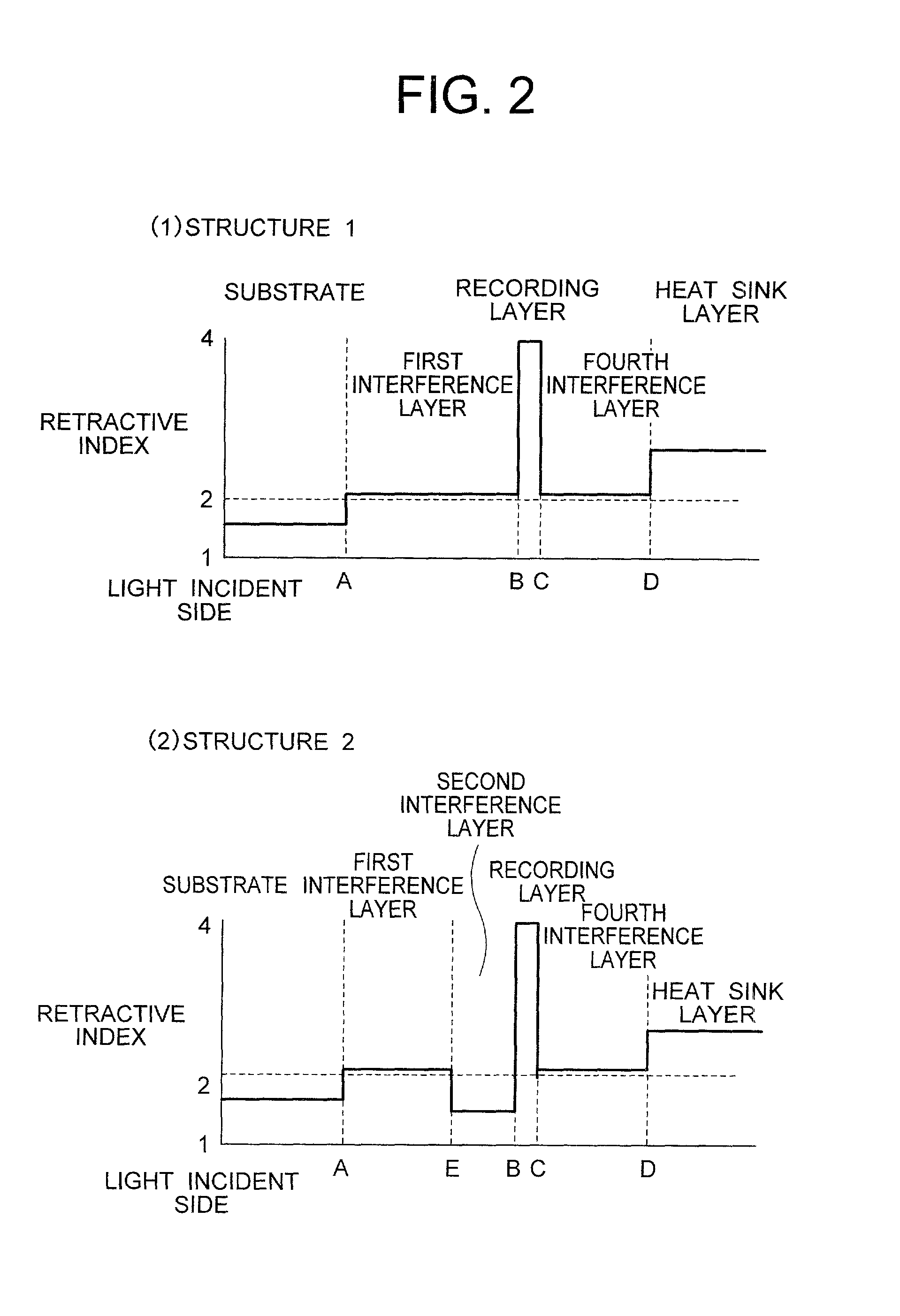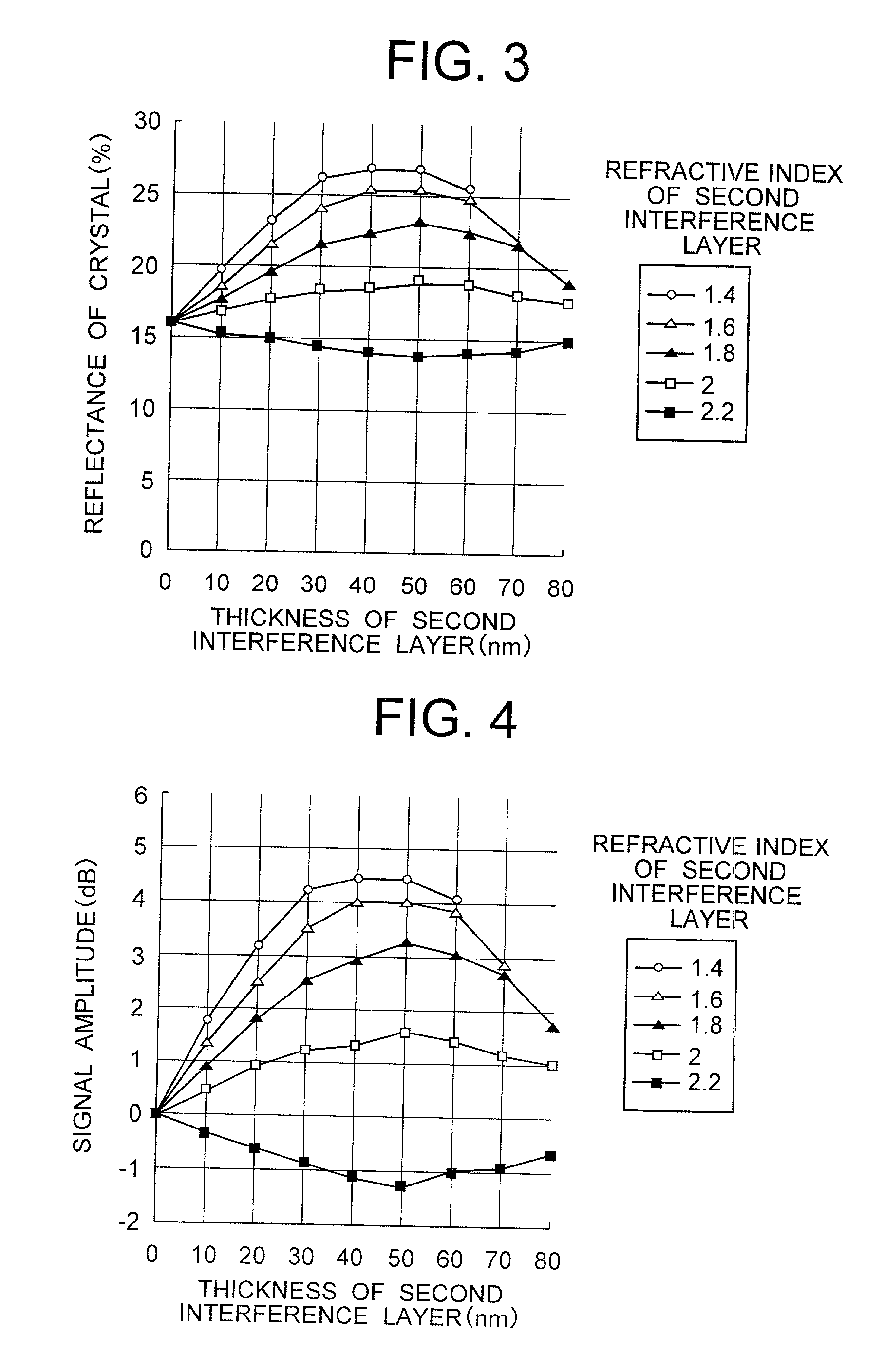Information recording medium
a technology of information recording and information, applied in the field of information recording medium, can solve the problems of many problems that remain to be solved, the suppression of cross-erase is critical, and the 2.6 gbdvd-ram has not yet satisfied the requirements of users in the aspect of recording capacity
- Summary
- Abstract
- Description
- Claims
- Application Information
AI Technical Summary
Benefits of technology
Problems solved by technology
Method used
Image
Examples
Embodiment Construction
[0057] The present invention will be explained in detail with reference to the following embodiments thereof.
[0058] FIG. 1 shows a basic construction of an information recording medium according to the present invention. A first information recording member has a construction wherein a first interference layer 1-2, a second interference layer 1-3, a first interface layer 1-4, a recording layer 1-5, a second interface layer 1-6, a third interference layer 1-7, a thermal buffer layer 1-8 and a heat sink layer 1-9 are serially laminated over a substrate 1-1 provided with groove-like information recording tracks. Another information recording member having the same construction is bonded through an adhesive 1-10.
[0059] The substrate 1-1 uses a plastic transparent substrate such as a polycarbonate. Generally, the refractive index of such a transparent substrate is from about 1.5 to about 1.6. The first interference layer 1-2 must have optical characteristics such that its refractive inde...
PUM
| Property | Measurement | Unit |
|---|---|---|
| wavelength | aaaaa | aaaaa |
| distance | aaaaa | aaaaa |
| thickness | aaaaa | aaaaa |
Abstract
Description
Claims
Application Information
 Login to View More
Login to View More - R&D
- Intellectual Property
- Life Sciences
- Materials
- Tech Scout
- Unparalleled Data Quality
- Higher Quality Content
- 60% Fewer Hallucinations
Browse by: Latest US Patents, China's latest patents, Technical Efficacy Thesaurus, Application Domain, Technology Topic, Popular Technical Reports.
© 2025 PatSnap. All rights reserved.Legal|Privacy policy|Modern Slavery Act Transparency Statement|Sitemap|About US| Contact US: help@patsnap.com



